More countries around the globe are investing in alternative and renewable energy sources to address climate change.
In addition to solar panels and hydroelectric generators, wind turbines are one of the frontrunners as a viable long-term, green solution.
Is wind energy good for the environment? Is wind energy more expensive than other renewables? We’ll answer these questions and more!
Read on to learn all you need to know about the impact of wind energy harvesting on the earth.
What Is Wind Power? (Short Answer)
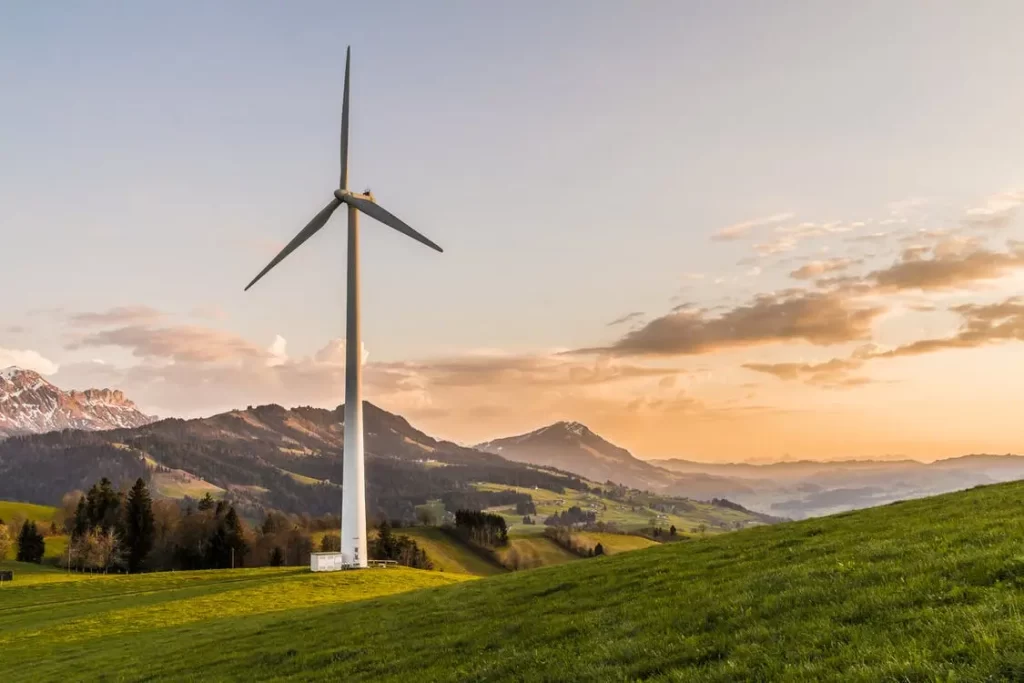
Wind power is the generation of electricity by using air flow to spin wind turbines. The turbines convert the mechanical energy into electrical energy that feeds into the electrical grid.
Wind turbines are usually installed in areas where there are strong, consistent prevailing winds to keep the turbines spinning as much as possible.
So, what do windmills do? They convert the ultimate renewable natural resource – wind – into mechanical energy to run a pump or mill, or into electricity to run everything else.
How is Wind Energy Produced?
Wind energy is produced by placing wind turbines in the path of prevailing winds. Most turbines operate efficiently with 3 blades. The wind makes the blades rotate.
The longer the blades the more energy can be produced by the windmill.
Inside the center of the windmill is a generator. As the propellers spin the inner shaft it can be geared to increase the power output or tied directly to the generator.
Either way, the friction inside the generator converts the wind’s kinetic energy into electricity that is gathered for distribution through the electrical grid.
Check out this quick video for a great visual to help you understand how wind turbines turn wind into electricity.
Read More: FUN Facts About Wind Energy. Here are some interesting facts you may not know!
Pros and Cons of Wind Energy
| Pros of Wind Energy | Cons of Wind Energy |
|---|---|
| Wind Energy Is Renewable And Sustainable | Wind Turbines are Expensive |
| Very Few Greenhouse Gas Emissions | Unpredictable Energy Source |
| Fuel Is Free | Turbines Create Noise Pollution |
| Very Space Efficient | Negative Biological And Environmental Impacts |
| Low Operating Costs And Steadily Decreasing Overall Cost | Disruptive Visual Appearance |
| Good for Independent Power Needs | |
| Reduces Dependence on Fossil Fuels |
7 Pros of Wind Energy (Advantages)
- Wind Energy Is Renewable And Sustainable
- Very Few Greenhouse Gas Emissions
- Fuel Is Free
- Very Space Efficient
- Low Operating Costs And Steadily Decreasing Overall Cost
- Energy Independent
- Great Potential For Residential Uses
Wind energy, much like solar, is one of the cleanest energy sources available to us, but there are pros and cons of solar energy (especially cons) that wind turbines don’t have.
Let’s take a look at each of the pros of wind power in more detail.
1. Wind Energy is Renewable and Sustainable
The wind is a renewable and sustainable energy source. The winds that sweep across the planet will last longer than humanity.
While the wind may last “forever,” the turbines don’t.
Wind turbines have a lifespan of about 25 years. The good part is that once they’re set up they will generate electricity as long as the wind is blowing.
2. Very Few Greenhouse Gas Emissions
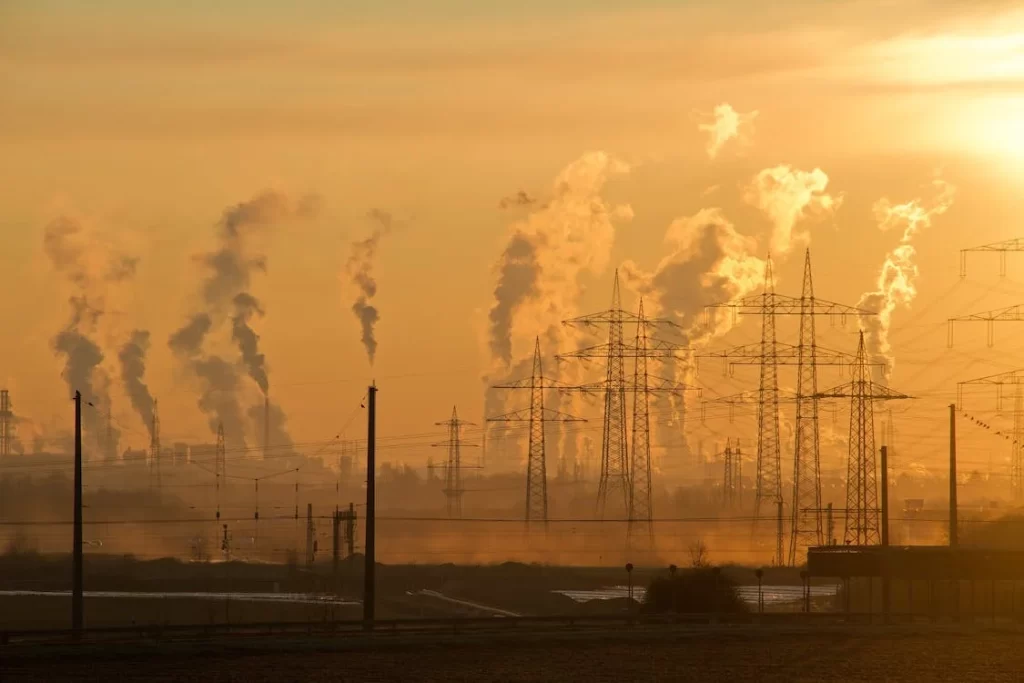
The majority of the Earth still relies heavily on coal, gas, and oil to generate electricity.
Other than not being renewable, these energy sources also emit a vast supply of harmful greenhouse gases into the environment.
Biomass is quickly replacing fossil fuels, especially coal, in many power plants, but greenhouse gas emissions are one of the disadvantages of biomass as a renewable resource.
Wind energy is a green energy source, and a wind turbine produces negligible amounts of these gases throughout its lifetime. This is one of the best alternatives to fossil fuels on the planet.
Manufacturing and installation of turbines release greenhouse gases. More often than not, the harmful effects of these gases are recouped within 9 months of clean turbine operation.
3. Fuel Is Free
Wind is one of our best examples of natural resources that is free. The wind is a renewable and sustainable energy source and is free fuel for wind turbines.
Once a wind turbine is built and installed, there is no refueling process that needs to take place to make it work. The natural wind is the fuel that makes the turbine spin to generate wind power.
4. Very Space Efficient
Compared to solar power, wind energy is very space efficient for significant output.
One large wind turbine, on average, has the capacity to generate enough electricity to power 940 U.S. homes.
Each turbine is very tall but it only utilizes a small amount of real estate, especially when compared to solar panel kits.
While wind turbines are required to be spaced a certain distance apart, the land in-between can be used for other purposes.
Solar farms don’t have this luxury. They require a vast amount of space, and their panels soak up every inch of it. This is a distinct advantage that wind power has over solar power.
5. Low Operating Costs and Steadily Decreasing Overall Cost
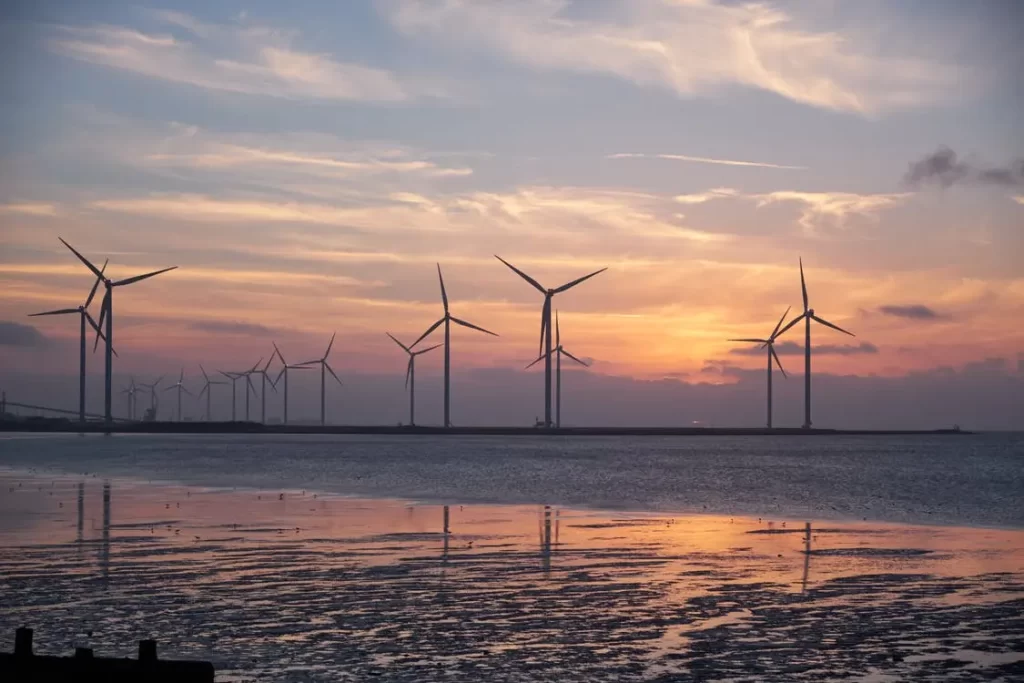
Much like solar, wind energy operating costs are usually very low after the manufacture and initial installation of wind turbines.
A single wind turbine now costs between $2 and 4 million dollars, depending on megawatt output. The yearly maintenance costs are around $45,000 per year.
The break-even point of wind turbine operation is right around 15 years. So for the last 10 years or so of its lifetime, it generates zero-cost electricity.
Since 1980, wind energy prices have decreased by more than 80%.
This is due to the vast amounts of research paying dividends as new and improved technology, in addition to the demand for wind power consistently increasing.
Future trends are expected to stay on a similar course as technology advances and wind energy continues to be demanded in higher volumes.
6. Good for Independent Power Needs
Anywhere that the sun is shining, the wind is usually blowing.
This means that wind energy can be produced just about anywhere in the world.
There are 2 main ways that energy generated by wind turbines can be used.
- Power can be sent to the main grid for widespread distribution
- Power can be sent directly to homes for off-grid electricity
Electricity from wind turbines can be stored in batteries just like solar energy so that it can be used in the future.
Some power companies use this technology to help buffer the grid between high use and low use times. They pull from batteries to help offset power usage during peak energy times.
7. Reduces Dependence on Fossil Fuels
Wind energy isn’t yet able to solve all of our climate change problems. However, wind turbine installations definitely help to offset some of our need for fossil fuels.
About 9.5% of the energy produced in the United States is from wind turbines. That doesn’t seem like a lot, but when you think about using nearly 10% fewer fossil fuels year over year it adds up.
Plus, as new wind installations go in that percentage will keep climbing. Add that to other renewable energy sources and you have a full 20% of US energy that comes from renewable power sources.
How Long Does It Take for a Wind Turbine to Break Even?
In general, it takes about 15 years for a wind turbine to break even. It costs $2-4 million to buy and install it. Then it costs about $45,000 yearly in maintenance costs.
By the time the wind turbine is about 15 years old, it is operating in net positive power output and will continue to do so until it is around 25 years old.
Of course, these numbers are averages. There are turbines that break-even sooner and ones that break even later. There are also turbines that last longer than 25 years and ones that get replaced sooner.
Is Wind Energy Renewable?
The answer is a definitive yes! However, wind turbines aren’t renewable.
The wind blows as the air pressure changes from place to place. The changing pressure causes the wind to blow from high-pressure areas to low-pressure areas.
Where this movement is predictable we can place wind farms to harvest the wind energy that is naturally passing through these areas.
However, wind turbines are not renewable for the most part. Some of the motor components can be reused – especially copper and other metals.
However, the fiberglass tower and blades and other non-renewable components will end up in the landfill. This is a large and looming problem for the wind industry.
Types of Wind Energy
There are 3 types of wind energy collectors used globally.
- Distributed Wind Turbines (or Small Wind Turbines) – These are scaled to provide power to single homes or farms. They aren’t connected to the grid and are often used to charge battery banks.
- Utility Scale or Commerical Wind Turbines – Large 2.75-megawatt wind turbines that are tied to the utility grid to supply power to large residential areas, businesses, and manufacturing plants. These turbines can be smaller or larger, but most turbines launched since 2020 are about this size.
- Offshore Wind Turbines – The largest size turbines are reserved for offshore use. They are massive turbines with a maximum output of 8.2 megawatts. The larger the blades the more electricity can be generated, but these massive turbines are hard to transport – making them perfect for placing at sea.
5 Cons of Wind Energy (Disadvantages)
- Wind Turbines are Expensive
- Unpredictable Energy Source
- Turbines Create Noise Pollution
- Negative Biological And Environmental Impacts
- Disruptive Visual Appearance
Wind energy’s positives are fairly well-known. That said, it also has its own unique set of disadvantages.
As far as residential use goes, wind turbines usually lose to solar for cost and aesthetic purposes.
Companies like Tesla are doing their best to make solar even more visually appealing for residential homeowners, squeezing wind turbines out of this market sector.
In general, the wind seems like a viable supplement to any country’s energy production strategy; however, it tends to fall short when being considered as a primary energy producer.
Let’s take a look at the main wind energy cons that keep wind energy out of the spotlight in many places.
1. Wind Turbines are Expensive
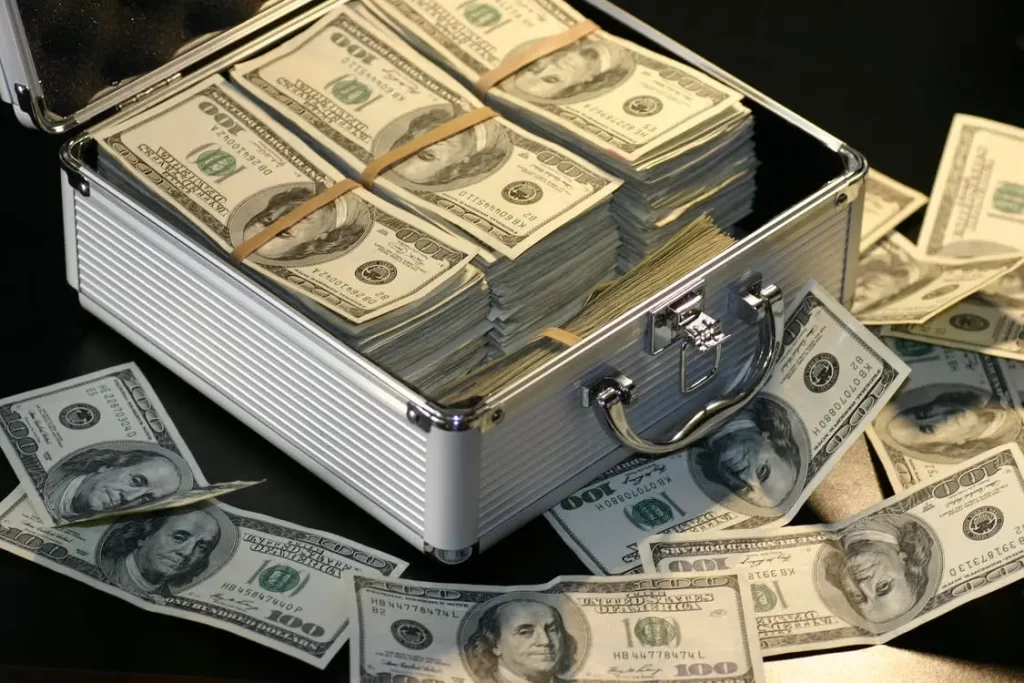
While low operating costs happen to be an advantage of wind energy, high upfront investments also make the cost a negative.
Large-scale wind farms and single residential wind turbines generally get built due to financial incentives.
Fossil fuels, such as coal and natural gas, currently produce electricity at a low cost, which makes it hard for wind to complete in the short run.
Financial incentives for wind turbine installations are provided so that the long-run operational costs of wind energy have a chance to offset the high upfront costs.
It takes about 15 years to break even on the cost of installing a wind turbine.
2. Unpredictable Energy Source
The unpredictability of wind is the second biggest downside to using wind turbines, especially for residential use.
Even though solar energy is intermittent, it’s predictable. With solar energy, you know when the sun will rise and fall. This makes it relatively easy to plan for energy storage.
Wind energy is a different story. While wind is available anywhere the sun is shining, that doesn’t always mean the wind is blowing.
That being said, most wind farms are located in areas where the wind blows more often than not. This is why they’re found on high plateaus and ridges where the wind is fairly constant.
Wind’s advantage here is that it can still produce energy during nighttime. Those in rural areas often combine solar panels and wind turbines for off-grid living.
Combining these two technologies helps ensure a more steady source of energy, especially during storms. When the clouds cover the sun the wind is usually blowing.
3. Turbines Create Noise Pollution
The majority of utility-scale wind turbine farms are located in rural areas. This means that the chances of living near them are generally smaller.
That being said, noise can be a big issue for those that live within close proximity.
Wind turbines are placed at least 300 meters away from the nearest house when they’re installed in residential areas.
The background noise produced by a single (properly functioning) wind turbine is about 43 decibels. That’s pretty quiet – about as loud as the refrigerator running in the kitchen.
It is like the white noise we hear daily. We stop hearing it until the power goes out and suddenly everything is so quiet.
The hum from wind turbines is the sound of the generator inside the turbine head. It uses friction to convert wind energy into electricity.
In areas where there is also traffic and wind noise people usually don’t notice the sound of the wind turbines because there are other environmental noise pollutants in the area.
Here’s a great video clip to compare the noise of a wind farm to daily noises you will hear in nature and residential areas.
4. Negative Biological and Environmental Impacts
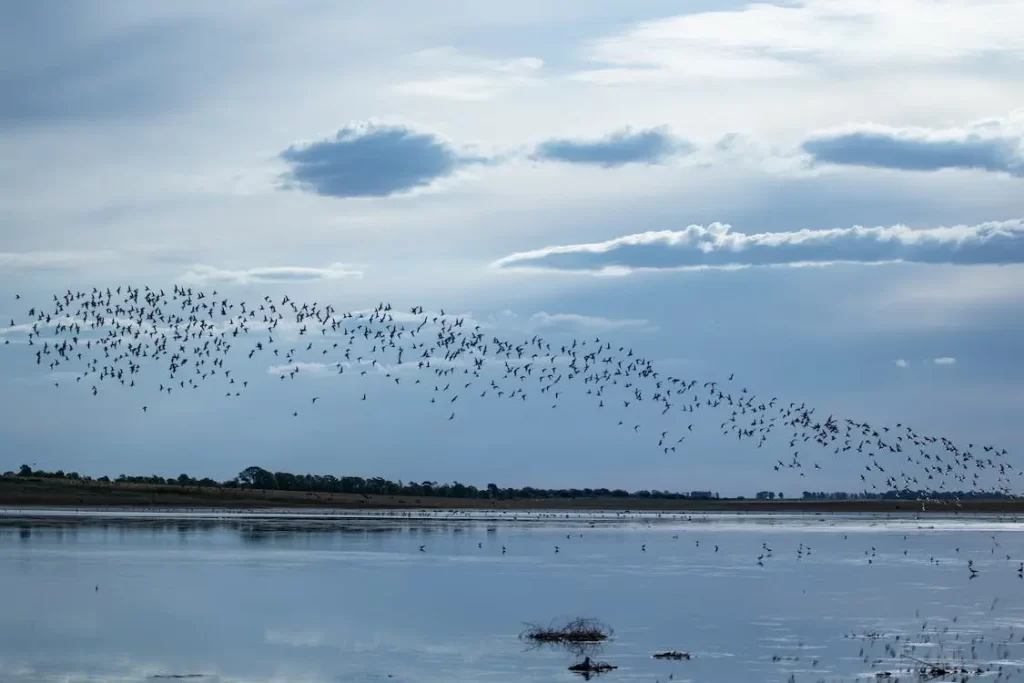
The construction of new energy production plants causes a negative impact on wildlife and the surrounding environment.
Habitats are destroyed as wind farms are constructed and maintained.
When wind farms are constructed on agricultural land the food production per acre decreases though most farmers will continue to use the land around the towers.
Birds and bats often fly into the rotating blades of wind turbines, leaving them with little to no chance of survival.
While this may be an infrequent occurrence, it is a problem that accompanies large wind farms.
Wind farms also disrupt migration patterns and nesting patterns for birds.
These impacts probably don’t outweigh the importance of having wind power in our national power portfolio because the impacts are far less than extracting and burning fossil fuels.
However, it is important that we understand the impact of our burgeoning energy needs.
These types of negatives are present for all types of energy production. As many look to the future of technologies like electric cars, we have to remember that there is still a cost for providing that electricity.
The power plants that supply EV chargers are burning fossil fuels, the solar panels require coal and silica mining, and turbines disrupt natural ecosystems.
There is a real cost to the earth to meet our energy demands.
5. Disruptive Visual Appearance

The last con we’ll mention is a small one, but it can certainly make or break a buyer’s decision to choose wind energy as a power source.
Many people have different opinions when it comes to the aesthetics of wind turbines.
While most actually enjoy their sleek, modern appearance, there will always be some who don’t.
They certainly are noticeable for better or worse. Many beautiful landscape views have been forever changed with thousands of towers and rotating blades.
Since wind energy is often considered for residential energy, this is something homeowners have to decide on.
Solar usually wins out on the aesthetically pleasing argument when it comes to home power production because the low-profile panels can blend into the home’s aesthetic.
FAQs
Q: What are the 2 Cons of Wind Energy?
A: The 2 main cons of wind energy are the installation cost and environmental impact. These turbines are so expensive that they’re out of reach for most developing countries. They’re also a known hazard to birds and bats.
Q: What are the Uses of Wind Energy?
A: Wind energy is almost always used for 2 things: to generate electricity or to draw water.
The newest and most widespread use of wind turbines is to generate electricity in the turbine head. This electricity is taken to battery storage or into a connected electrical grid.
The more traditional use of a windmill is to operate a manual pump that draws water from a natural water source. This could be a well, a stream, or a lake or pond.
The water is usually pumped into a holding tank for later use. In agricultural uses the water could be pumped directly into a field canal for irrigation.
Final Thoughts
The energy sector desperately needs to shift to renewable energy sources even though that transition is difficult and expensive.
As we continue to burn through our supply of fossil and nuclear fuels, we must turn to alternative, renewable, and green energy sources to meet our demands.
While one of the main advantages of nuclear energy is that it’s clean as wind turbines but more reliable than wind energy, it can’t take the top spot forever because it is non-renewable.
Wind, much like solar, has to be a part of the equation.
The wind, like the sun, is a consistent part of our experience living on this planet. If we can harvest the sun and the wind to help meet our energy needs we’re taking advantage of our 2 best renewable natural resources.
What are your thoughts on wind energy? How does it compare to solar, hydroelectric, and conventional fossil fuel energy? We’d love to hear your thoughts in the comments below!

